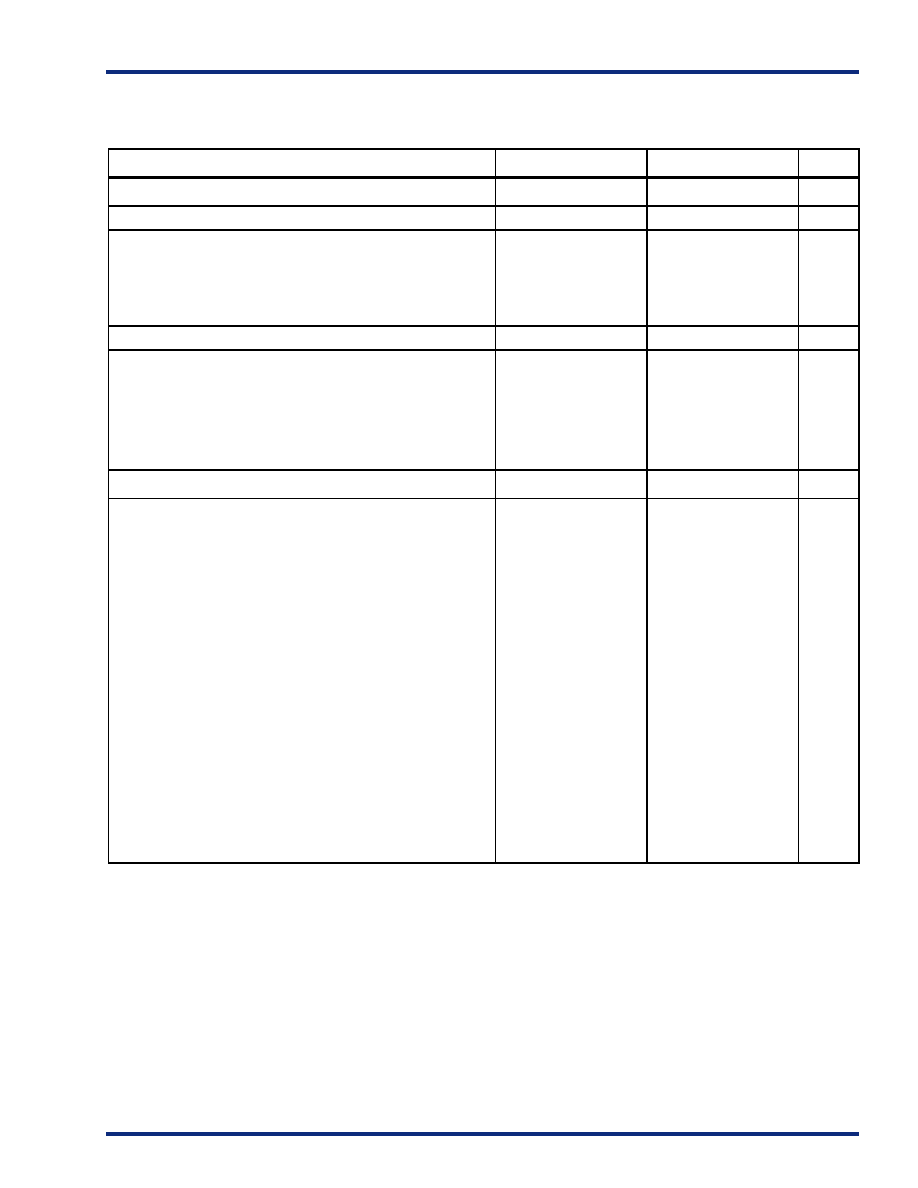- 您現(xiàn)在的位置:買賣IC網(wǎng) > PDF目錄4442 > A1020B-1PQG100C (Microsemi SoC)IC FPGA 2K GATES 100-PQFP COM PDF資料下載
參數(shù)資料
| 型號: | A1020B-1PQG100C |
| 廠商: | Microsemi SoC |
| 文件頁數(shù): | 25/98頁 |
| 文件大?。?/td> | 0K |
| 描述: | IC FPGA 2K GATES 100-PQFP COM |
| 標(biāo)準(zhǔn)包裝: | 66 |
| 系列: | ACT™ 1 |
| LAB/CLB數(shù): | 547 |
| 輸入/輸出數(shù): | 69 |
| 門數(shù): | 2000 |
| 電源電壓: | 4.5 V ~ 5.5 V |
| 安裝類型: | 表面貼裝 |
| 工作溫度: | 0°C ~ 70°C |
| 封裝/外殼: | 100-BQFP |
| 供應(yīng)商設(shè)備封裝: | 100-PQFP(14x20) |
第1頁第2頁第3頁第4頁第5頁第6頁第7頁第8頁第9頁第10頁第11頁第12頁第13頁第14頁第15頁第16頁第17頁第18頁第19頁第20頁第21頁第22頁第23頁第24頁當(dāng)前第25頁第26頁第27頁第28頁第29頁第30頁第31頁第32頁第33頁第34頁第35頁第36頁第37頁第38頁第39頁第40頁第41頁第42頁第43頁第44頁第45頁第46頁第47頁第48頁第49頁第50頁第51頁第52頁第53頁第54頁第55頁第56頁第57頁第58頁第59頁第60頁第61頁第62頁第63頁第64頁第65頁第66頁第67頁第68頁第69頁第70頁第71頁第72頁第73頁第74頁第75頁第76頁第77頁第78頁第79頁第80頁第81頁第82頁第83頁第84頁第85頁第86頁第87頁第88頁第89頁第90頁第91頁第92頁第93頁第94頁第95頁第96頁第97頁第98頁

31
Hi R e l F P GA s
A1 28 0A T i m i n g C har a c t e r i st i c s (continued)
(W or s t - C as e M i l i t a r y Cond i t i o n s , V CC = 4.5 V, TJ = 1 25°C)
‘–1’ Speed
‘Std’ Speed
Parameter Description
Min.
Max.
Min.
Max.
Units
Input Module Propagation Delays
tINYH
Pad to Y High
4.0
4.7
ns
tINYL
Pad to Y Low
3.6
4.3
ns
tINGH
G to Y High
6.9
8.1
ns
tINGL
G to Y Low
6.6
7.7
ns
Input Module Predicted Routing Delays1
tRD1
FO=1 Routing Delay
6.2
7.3
ns
tRD2
FO=2 Routing Delay
7.2
8.4
ns
tRD3
FO=3 Routing Delay
7.7
9.1
ns
tRD4
FO=4 Routing Delay
8.9
10.5
ns
tRD8
FO=8 Routing Delay
12.9
15.2
ns
Global Clock Network
tCKH
Input Low to High
FO = 32
FO = 384
13.3
17.9
15.7
21.1
ns
tCKL
Input High to Low
FO = 32
FO = 384
13.3
18.2
15.7
21.4
ns
tPWH
Minimum Pulse Width High
FO = 32
FO = 384
6.9
7.9
8.1
9.3
ns
tPWL
Minimum Pulse Width Low
FO = 32
FO = 384
6.9
7.9
8.1
9.3
ns
tCKSW
Maximum Skew
FO = 32
FO = 384
0.6
3.1
0.6
3.1
ns
tSUEXT
Input Latch External Setup
FO = 32
FO = 384
0.0
ns
tHEXT
Input Latch External Hold
FO = 32
FO = 384
8.6
13.8
8.6
13.8
ns
tP
Minimum Period
FO = 32
FO = 384
13.7
16.0
16.2
18.9
ns
fMAX
Maximum Frequency
FO = 32
FO = 384
73
63
62
53
MHz
Note:
1.
Routing delays are for typical designs across worst-case operating conditions. These parameters should be used for estimating device
performance. Post-route timing analysis or simulation is required to determine actual worst-case performance. Post-route timing is based
on actual routing delay measurements performed on the device prior to shipment. Optimization techniques may further reduce delays by 0
to 4 ns.
相關(guān)PDF資料 |
PDF描述 |
|---|---|
| CAV24C02WE-GT3 | EEPROM I2C SER 2KB I2C 8SOIC |
| A42MX16-2VQG100I | IC FPGA MX SGL CHIP 24K 100-VQFP |
| HSC49DRYH-S13 | CONN EDGECARD 98POS .100 EXTEND |
| 951-015-010R011 | BACKSHELL 15POS 60DEG PLASTIC |
| ABC49DRYN-S13 | CONN EDGECARD 98POS .100 EXTEND |
相關(guān)代理商/技術(shù)參數(shù) |
參數(shù)描述 |
|---|---|
| A1020B-1PQG100I | 功能描述:IC FPGA 2K GATES 100-PQFP IND RoHS:是 類別:集成電路 (IC) >> 嵌入式 - FPGA(現(xiàn)場可編程門陣列) 系列:ACT™ 1 標(biāo)準(zhǔn)包裝:40 系列:SX-A LAB/CLB數(shù):6036 邏輯元件/單元數(shù):- RAM 位總計:- 輸入/輸出數(shù):360 門數(shù):108000 電源電壓:2.25 V ~ 5.25 V 安裝類型:表面貼裝 工作溫度:0°C ~ 70°C 封裝/外殼:484-BGA 供應(yīng)商設(shè)備封裝:484-FPBGA(27X27) |
| A1020B-1VQ80C | 功能描述:IC FPGA 2K GATES 80-VQFP COM RoHS:否 類別:集成電路 (IC) >> 嵌入式 - FPGA(現(xiàn)場可編程門陣列) 系列:ACT™ 1 標(biāo)準(zhǔn)包裝:40 系列:SX-A LAB/CLB數(shù):6036 邏輯元件/單元數(shù):- RAM 位總計:- 輸入/輸出數(shù):360 門數(shù):108000 電源電壓:2.25 V ~ 5.25 V 安裝類型:表面貼裝 工作溫度:0°C ~ 70°C 封裝/外殼:484-BGA 供應(yīng)商設(shè)備封裝:484-FPBGA(27X27) |
| A1020B-1VQ80I | 功能描述:IC FPGA 2K GATES 80-VQFP IND RoHS:否 類別:集成電路 (IC) >> 嵌入式 - FPGA(現(xiàn)場可編程門陣列) 系列:ACT™ 1 產(chǎn)品培訓(xùn)模塊:Three Reasons to Use FPGA's in Industrial Designs Cyclone IV FPGA Family Overview 特色產(chǎn)品:Cyclone? IV FPGAs 標(biāo)準(zhǔn)包裝:60 系列:CYCLONE® IV GX LAB/CLB數(shù):9360 邏輯元件/單元數(shù):149760 RAM 位總計:6635520 輸入/輸出數(shù):270 門數(shù):- 電源電壓:1.16 V ~ 1.24 V 安裝類型:表面貼裝 工作溫度:0°C ~ 85°C 封裝/外殼:484-BGA 供應(yīng)商設(shè)備封裝:484-FBGA(23x23) |
| A1020B-1VQ84B | 制造商:ACTEL 制造商全稱:Actel Corporation 功能描述:ACT 1 Series FPGAs |
| A1020B-1VQ84C | 制造商:ACTEL 制造商全稱:Actel Corporation 功能描述:ACT 1 Series FPGAs |
發(fā)布緊急采購,3分鐘左右您將得到回復(fù)。